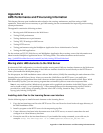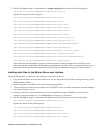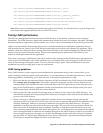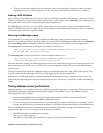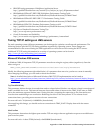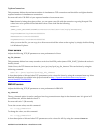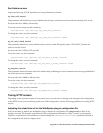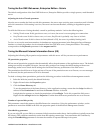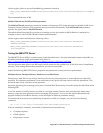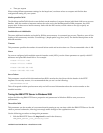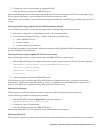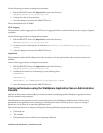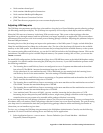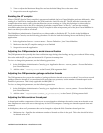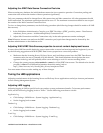
Use the registry editor to set the ListenBackLog parameter located at:
HKEY_LOCAL_MACHINE\SYSTEM\CurrentControlSet\Services\InetInfo\Parameters\ListenBack
Log
The recommended value is 200.
MaxPoolThreads and PoolThreadLimit parameter
The MaxPoolThreads parameter controls the number of threads per CPU in the thread pool available for IIS to run
Common Gateway Interface (CGI) processes (each process takes one thread). The PoolThreadLimit parameter
specifies the upper limit for MaxPoolThreads.
The default thread limit that IIS can create on a machine is twice the number of MB in RAM on a machine (for
example, a server with 512 MB of RAM is limited to1024 threads).
Use the registry editor and adjust the following values:
HKEY_LOCAL_MACHINE\SYSTEM\CurrentControlSet\Services\InetInfo\Parameters
\MaxPoolThreads
HKEY_LOCAL_MACHINE\SYSTEM\CurrentControlSet\Services\InetInfo\Parameters
\PoolTheadLimit
Tuning the IBM HTTP Server
The IBM HTTP Server (IHS) is a multi-process, single-threaded server. For more information about tuning IHS, see
the Hints on Running a high-performance Web server at:
http://www.software.ibm.com/webservers/httpservers/doc/v136/misc/perf.html
The configuration takes place in the IHS httpd.conf file located in the confdirectory of the Web server’s installation
directory. After setting the described parameters, you have to restart IHS.
Adjust the following IBM HTTP Server properties and parameters to tune your server performance.
MinSpareServers, MaxSpareServers, StartServers, and MaxClients
During heavy load, IHS can use a large amount of the server’s processing time to create and destroy httpd child
processes. For optimum performance, even under heavy load, specify the same value for all four parameters. This
avoids the time-costly recreation of sub-processes.
Ignore the appearing error message [error] server reached MaxClients setting. Consider raising the MaxClient when
restarting IHS.
A too-low number of child processes is as bad as a too-high number, because more processes also means more
memory usage and more processor time for managing the processes. You can use the Apache Benchmark (ab)
program located in the IHS bin directory to test the impact of different parameter settings.
To simulate 100 concurrent users performing 20 requests to LMS, for example, you can issue the following
command:
ab -n 20 -c 100 http://<hostname>/lms-lmm/studentCatalog.do
In the ab command’s summary, some fields of interest may be the following:
• Complete requests
• Failed requests
• Requests per second
Appendix A: LMS Performance and Fine-tuning Information 111



